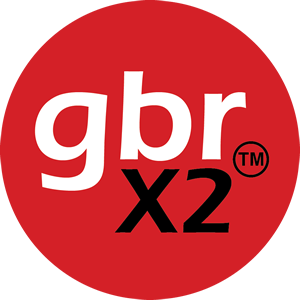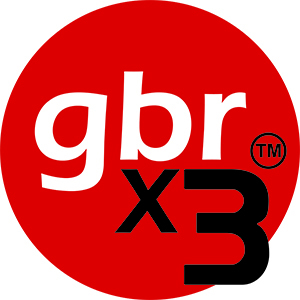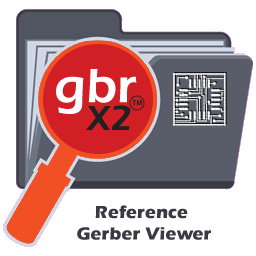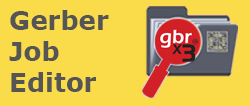
Gerber Format


The Gerber file format is the de facto standard for printed circuit board (PCB) design data transfer, called the backbone of the electronics fabrication industry. All PCB design systems output Gerber files and all PCB fabrication software can handle them, enabling PCB professionals to exchange PCB design data securely and efficiently.
Gerber layer files represent copper layers, solder mask, legend, and drill and route data. Attributes provide meta-information about these images, such as whether a graphics object is an SMD pad, a via pad or a fiducial, or net names of connections. The Gerber job file transfers PCB fabrication characteristics, such as thickness or finish, in a standardized and machine readable manner. The Gerber format is simple, compact and unequivocal. Thanks to its use of printable 7-bit ASCII characters, it is portable, human-readable and easy to debug. Implementations are thoroughly field-tested and debugged.
Resources
- An easy to use online Reference Gerber Viewer
- An offline Gerber Job Editor
- More resources are available on the Gerber Downloads page:
- The Gerber Format Specification
- A tutorial: the chapter “Overview of the Gerber Format” in the specification
- Examples of PCB fabrication data sets
- Test files, to help debug implementations
- Visual Studio Extension provides language support for Gerber X3/X2 format (repository)
- Gerber-writer: a Python library for writing Gerber files
Latest news about Gerber Format
- 03/07/2024 Gerber Layer Format Specification, revision 2024.05
- 30/08/2023 Gerber Layer Format Specification, revision 2023.08
- 07/07/2022 Formal syntax checker in new Reference Gerber Viewer
- 22/03/2022 Gerber Layer Format Specification, revision 2022.02
- 06/12/2021 Gerber Layer Format Specification, revision 2021.11
- 06/12/2021 XNC Format Specification, revision 2021.11
- 14/07/2021 New Gerber Job Editor now accepts notes in Chinese
- 10/05/2021 Ucamco releases Reference Gerber Viewer v2021.04
- 30/03/2021 Updated Gerber Layer Format Specification
- 10/03/2021 New Gerber Layer Format Specification
- 06/10/2020 Pentalogix implements Gerber X3
- 22/09/2020 The Gerber Parsing Expression Grammar
- 04/09/2020 New Gerber File Format Specification - Revision 2020.09
- 03/09/2020 Schema for Gerber Job File: great help for developers
- 07/02/2020 Interview with Luc Maesen at IPC APEX expo in San Diego
- 15/01/2020 New Gerber fabrication documentation specification
- 20/12/2019 Important Gerber X3 update
- 12/12/2019 Interview with Karel Tavernier at Productronica
- 25/10/2019 Towards Gerber X3
- 19/09/2019 New Gerber fabrication documentation specification
- 10/09/2019 Here's why the PCB industry still uses Gerber
- 25/06/2019 New version of Gerber File Format Specification
- 02/11/2018 New version of Gerber File Specification
- 04/09/2018 New version of Gerber File Specification
- 24/08/2018 Ucamco Releases version 2.1 of the Reference Gerber Viewer
- 10/06/2018 New version of Gerber File Specification
- 11/05/2018 New version of Gerber File Specification
- 02/05/2018 Ucamco Releases Specification for Fabrication Documentation in Gerber
- 20/02/2018 Autodesk Eagle v8.6 supports Gerber X2
- 06/12/2017 Major update for Ucamco's Reference Gerber Viewer
- 04/12/2017 Update of Gerber File Format documents
- 24/07/2017 Ucamco provides free Reference Gerber file Viewer
- 07/06/2017 Stella Corporation implements Gerber X2 input and output
- 22/03/2017 Proposal for fabrication documentation in Gerber
- 14/03/2017 Gerber X2 at the Embedded World Exhibition
- 09/02/2017 Proteus Design Suite v8.6 supports Gerber X2
- 22/11/2016 Cuprum implements powerful new Gerber tools
- 17/11/2016 Major revision of the Gerber File Format Specification
- 09/11/2016 Gerber Netlist goes live with KiCad
- 07/11/2016 German Ucamco Club Seminar
- 10/10/2016 New attributes include the CAD netlist (component-pin-net) in Gerber
- 31/08/2016 PentaLogix implements Gerber X2 in ViewMate and CAMMaster
- 10/08/2016 Gerber中CAD网表建议
- 31/05/2016 Gerber Nested S&R Draft Version 11 Released
- 19/05/2016 DipTrace 3.0 implements Gerber X2
- 02/05/2016 Gerber Nested S&R Draft Version 10 Released
- 29/02/2016 Gerber Nested S&R Draft Version 9 Released
- 29/12/2015 Gerber nested step & repeat – final call for comments
- 30/09/2015 Proposal for nested Step and Repeat in Gerber
- 23/07/2015 Support for Gerber X2 in Easy-PC
- 20/07/2015 Gerber now even clearer
- 01/06/2015 Pulsonix integrates Gerber X2 in Pulsonix 8.5
- 25/11/2014 Gerber version 2 - also known as X2 - explained
- 13/11/2014 Transform your business with Gerber X2
- 31/07/2014 Graphicode’s GC-Prevue v22.3 supports new Gerber X2 format
- 13/06/2014 Gerber X2: the new paradigm in CAD-to-CAM communication
- 30/05/2014 Standard Gerber declared obsolete
- 18/04/2014 Karel Tavernier introduces Gerber X2
- 03/12/2013 Gerber's new attributes set to transform CAD-to-CAM communication
- 31/08/2013 Gerber grows attributes
- 05/08/2013 Homage to the Gerber Format


